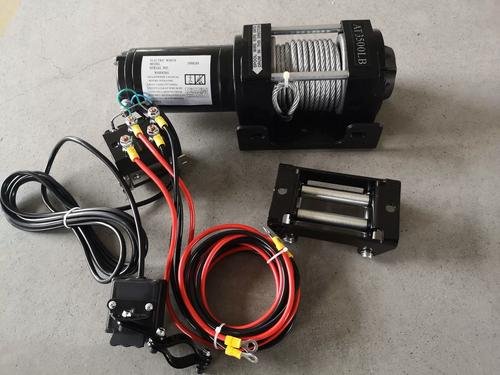A winch is a mechanical device that uses power to pull heavy objects. Nowadays, electric winches powered by electricity are not only crucial tools for vehicle self-recovery but also widely used in various industrial settings such as construction sites and factory workshops, offering numerous advantages. The various components inside the winch play vital roles in its operation.

These components include:
- Clutch
The clutch is responsible for controlling the engagement and disengagement of the winch drum. It is typically operated by a simple handle. - Winch Drum
The winch drum, which works similarly to a drum for winding cables, is powered by an electric motor. Its direction can be changed via a remote control button. Heavy-duty winches use larger drums as they handle heavier cables. - Motor
This component contains a DC motor. The winch model is also equipped with a cooling fan to prevent overheating during operation. - Relay Gearbox
The relay gearbox receives signals from the remote control and includes circuitry that allows the motor direction to be changed. - Cable Guide
If the winch needs to operate at an angle, the cable guide directs the cable towards the drum. If it has a roller, it is referred to as a roller cable guide. - Winch Drum (again)
The winch drum, like the cable winding cylinder, is driven by the electric motor and its direction can be adjusted using a remote control. For heavy-duty winches, the drum is larger due to the heavier cables. - Remote Control
The remote control allows the winch to be operated from a distance. The most common models have a wired connection to the winch, while wireless models are also available on the market.
Although electric winches generate significant torque using electrical power, certain auxiliary items are essential during operation, including gloves, U-shaped lifting ears, lifting straps, pulleys, and more. Proper use of these tools and equipment is necessary to successfully complete heavy object pulling tasks.
